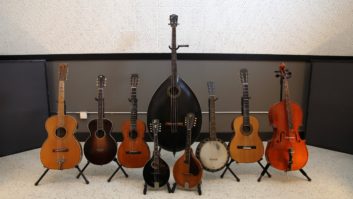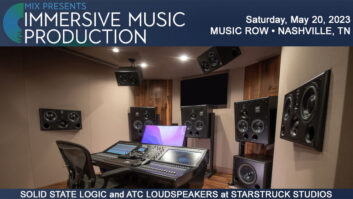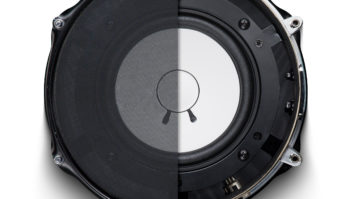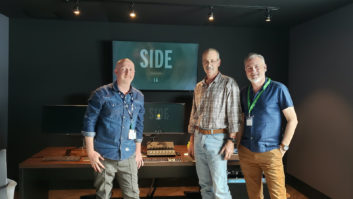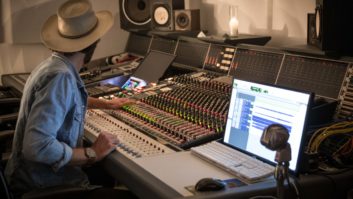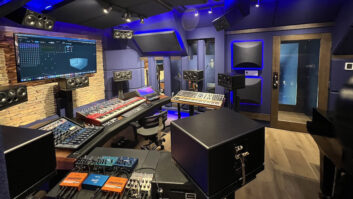Fort Wayne, IN (April 12, 2021)—“People don’t hear new music today without looking it up on YouTube, so we’re only doing half the job if all we’re doing is audio,” says Steven Tyler, owner of Silverbirch Studios. With that in mind, the new studio is aimed squarely at today’s music consumption habits. Featuring a large live space flooded with natural light, two iso booths, a well-appointed control room and an adjacent video production suite, Silverbirch Studios was built from the ground up to provide both sound and picture for any music project.
The facility, designed by North Carolina-based acoustician and designer Wes Lachot and constructed on a hexagonal floor plan, was built with the intention of delivering live performance broadcasts to music fans in the manner with which they have become accustomed.
Tyler, who moved from the U.K. to Northern California and started a business there over two decades ago, had long been involved in audio, working in live sound and recording, and touring with his wife, who releases music as Mimi Burns. “When I sold a business and had the opportunity to make some investments, it was clear to my wife and I that we should invest in what we know and where our hearts are, and to do so in a manner that can build community and give back to the community,” he says of their new studio venture.
Years ago, Tyler worked for a time at online MI/pro audio retailer Sweetwater, which is headquartered in Fort Wayne. Perhaps unsurprisingly, some of Silverbirch’s new gear was purchased there, and, Tyler believes, drew some of the studio’s potential clientele to the neighborhood to work for the retailer. “I have no empirical evidence to support it, but I’m willing to suggest there are more musicians, engineers and producers per capita here than in other parts of the world,” he says.
The control room features a 32-channel API 1608. “Deciding to put in an analog console was a big decision—the right decision, in terms of the workflow, trying to capture natural performances and the philosophy of getting the sound right in the room, which is also why we hired Wes,” says Tyler.
“You get amazing drums sounds out of an API when you push it hard,” he adds. “At the same time, it’s very, very clean if you don’t push it hard.”
An Avid S3 surface in the API’s center section drives a Pro Tools HDX rig. “We’re doing work for video as well, so being able to use offline bounce is kind of a big deal,” he says.
In-wall ATC SCM 110ASL Pro main monitors are supplemented by Focal Solo6 Be nearfields. “I talked at length with Wes about monitoring. When you have monitors like those ATCs and you soffit mount them, you hear with the least obstruction, the fewest phase-related issues possible.”
The tracking space accommodates ensemble playing, regardless of music genre. “I study the work of Al Schmitt, as much as I’m able,” says Tyler, “and [follow] the philosophy of capturing an amazing sounding instrument—be that something involving wood and strings or a voice—and getting it in the right place. If it doesn’t sound good, change the mic.”
Recording the Red Planet
That concept chimes with studio manager Austin Hogan, originally from San Francisco: “My background is as a classical musician. I’m drawn to the acoustic sound, music coming from real instruments. I also have a love for rock music, so I’ve had a foot in both worlds. I had walked away from music as a primary pursuit, but thought I would find my way back, and here I am.”
A video production suite in a separate building is connected over fiber via a Focusrite RedNet system, Tyler reports. “We use the Focusrite R1 for multiple things—not just as a monitor controller, but also for communication between director and artist as well as director and engineer in the control room, and camera people. It’s a wonderful box.”
Silverbirch celebrated its opening in February with a series of live broadcasts. “We’re reaching out to people with a message that, if we do things right, can help bring about some emotional health and healing,” says Tyler. “Now, more than ever, we really need music to touch people’s hearts and minds and bring us together.”
Silverbirch Studios • www.silverbirch.studio
